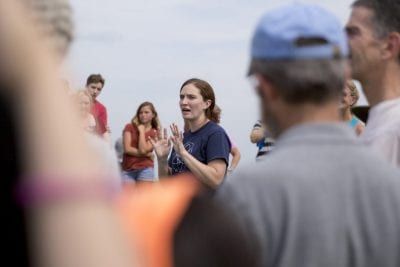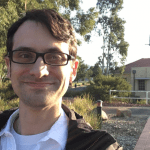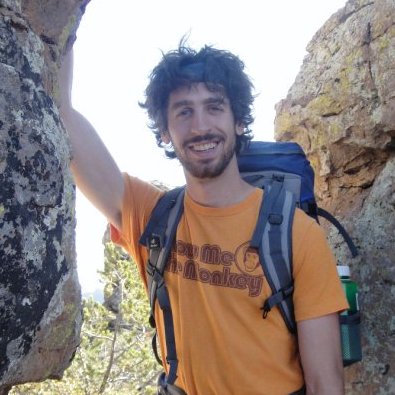Physics major Nicole Khusid, a rising senior at UConn, was featured in a UConn Today article about her research. Nicole has been working on gravitional lensing of distant sources of gravitational waves, seeking to understand their multimessenger signals and detectability by future astrophysics facilities. Nicole was awarded a SURF (Summer Undergraduate Research Fund) award to perform this research wtih Prof. Chiara Mingarelli. For the full story, see the article in UConn Today.
ASTRO
Posts related to astronomy and astrophysics research
Prof. Battersby’s research featured in UConn Today article

Professor Cara Bettersby’s research is featured in the article “The Study of Big Data: How CLAS Researchers Use Data Science” published by UConn Today.
Prof. Battersby’s work focuses on describing and studying the center of the Milky Way galaxy, which she calls an “experimental playground” for the distant cosmos. Her work described the spectroscopy of the galaxy’s center, which analyzes imagery to understand the chemical makeup of the area, as well as its temperature and the velocity of objects.
Battersby works on data from the Submillimeter Array facility, a collection of eight powerful telescopes situated atop Mount Maunakea in Hawaii. The telescope can collect up to a terabyte of data every day, and Battersby’s project used 61 days of data.
Battersby refers to her computer as “her laboratory,” and ensures the students in her classes do, too. In her courses, she often assigns programming and analysis problems, like using a large data set to determine the material composition of the Sun.
“We have a lot of the tools to train students in data science,” she says. “Research is moving in that direction, and students in our programs are prepared for it.”
Dr. Yasaman Homayouni featured in CLAS story on 2021 graduates
New Physics PhD graduate Yasaman Homayouni is featured in a story on the class of 2021 from the College of Liberal Arts and Sciences (CLAS). For the full story of what inspired Yasaman and other students during their time at UConn, see the article in UConn Today.
A Signal from Beyond
Looking for ripples in the fabric of spacetime.
UConn astrophysicist Chiara Mingarelli is part of a team of researchers who recently published data on a hint of a signal that sent ripples of excitement through the physics community. These monumental findings are the culmination of twelve and a half years of data gathered from NANOGrav — a network of pulsars across the galaxy — all in the hopes of detecting gravitational waves.
Gravitational waves are generated when galaxies merge and supermassive black holes at their centers collide and send low-frequency gravitational waves out into the universe. The team thinks the source of the signal could be gravitational waves, but it will take about 2 more years of data to be sure.
The findings sparked the interest of other physicists with their own speculations about the signal, such as cosmic strings or primordial black holes. Though still a couple of years away, Mingarelli says the final results could also help test General Relativity or even open the door to entirely new physics.
This article first appeared on UConn Today, February 15, 2021
UConn Researcher an Architect for Astronomical Survey Making Observations Toward a New Understanding of the Cosmos
November 2, 2020 – Elaina Hancock – UConn Communications
The Sloan Digital Sky Survey’s fifth generation – a groundbreaking project to bolster our understanding of the formation and evolution of galaxies, including the Milky Way – collected its very first observations on the evening of October 23.

Image: The Sloan Digital Sky Survey’s fifth generation made its first observations earlier this month. This image shows a sampling of data from those first SDSS-V data. The central sky image is a single field of SDSS-V observations. The purple circle indicates the telescope’s field-of-view on the sky, with the full Moon shown as a size comparison. SDSS-V simultaneously observes 500 targets at a time within a circle of this size. The left panel shows the optical-light spectrum of a quasar–a supermassive black hole at the center of a distant galaxy, which is surrounded by a disk of hot, glowing gas. The purple blob is an SDSS image of the light from this disk, which in this dataset spans about 1 arcsecond on the sky, or the width of a human hair as seen from about 21 meters (63 feet) away. The right panel shows the image and spectrum of a white dwarf — the left-behind core of a low-mass star (like the Sun) after the end of its life.Image Credit: Hector Ibarra Medel, Jon Trump, Yue Shen, Gail Zasowski, and the SDSS-V Collaboration. Central background image: unWISE / NASA/JPL-Caltech / D.Lang (Perimeter Institute).
“In a year when humanity has been challenged across the globe, I am so proud of the worldwide SDSS team for demonstrating — every day — the very best of human creativity, ingenuity, improvisation, and resilience. It has been a wild ride, but I’m happy to say that the pandemic may have slowed us, but it has not stopped us,” says Juna Kollmeier, director of the project known as SDSS-V.
The project is funded primarily by an international consortium of member institutions, along with grants from the Alfred P. Sloan Foundation, U.S. National Science Foundation, and the Heising-Simons Foundation.
Jonathan Trump, UConn assistant professor of physics, has a long history with SDSS, and is one of the architects for the fifth installment of the program. He is also serving as the cadence coordinator for the project’s black hole science goals.
“My very first undergrad research project was an SDSS project. I have worked on SDSS as a post-doc, and I am working on it now as faculty,” Trump says. “I’ve been part of it from the first SDSS iteration, and as it has taken off, so has my career.”
Trump and his colleagues will focus on three primary areas of investigation with SDSS-V, each exploring different aspects of the cosmos using different spectroscopic tools. Together, these three project pillars—called “Mappers”—will observe more than six million objects in the sky, and monitor changes in more than a million of those objects over time.
The survey’s Local Volume Mapper will enhance our understanding of galaxy formation and evolution by probing the interactions between the stars that make up galaxies and the interstellar gas and dust that is dispersed between them. The Milky Way Mapper will reveal the physics of stars in our Milky Way, the diverse architectures of its star and planetary systems, and the chemical enrichment of our galaxy since the early universe. The Black Hole Mapper will measure masses and growth over cosmic time of the supermassive black holes that reside in the hearts of galaxies, as well as the smaller black holes left behind when stars die.
Trump says another novel aspect of SDSS-V is repeat observation, which he will be scheduling over the duration of the project as cadence coordinator, to help gather more data about the evolution of different features of matter near black holes.
“SDSS-V has more repeat observations as part of the plan. I would say that broadly in astronomy there is an emphasis on repeat observations,” he says. “For instance, black holes are fascinating – they are rips in space-time, and they are extremely exotic. Even one snapshot reveals how exotic they are, but they are also dramatically variable, and when we observe them day-to-day, week-to-week, year-to-year, we see dramatic changes in their emission, which we think correspond to dramatic changes just beyond the event horizon of the black hole. We are learning that you can reveal a lot about the physics of what is going on around black holes by watching them as a function of time.”
SDSS-V will operate out of both Apache Point Observatory in New Mexico, home of the survey’s original 2.5-meter telescope, and Carnegie’s Las Campanas Observatory in Chile, where it uses the 2.5-meter du Pont telescope. SDSS-V’s first observations were gathered in New Mexico with existing SDSS instruments, as a necessary change of plans due to the pandemic. As laboratories and workshops around the world navigate safe reopening, SDSS-V’s own suite of new innovative hardware is on the horizon—in particular, systems of automated robots to aim the fiber optic cables used to collect the light from the night sky. These will be installed at both observatories over the next year. New spectrographs and telescopes are also being constructed to enable the Local Volume Mapper observations.
Trump points out that another important aspect of SDSS, especially in a time of remote learning and researching, is the fact that data are made public and accessible.
“It is easy to access and mine the SDSS databases and make interesting studies,” he says. “They have wonderful tutorials for schools and for researchers to get started. They make it so easy for people to dive in. It is a very rich opportunity; it’s well organized and publicly shared.”
To learn more about the program, explore the data, or keep up with the research, visit https://www.sdss5.org/
This article first appeared online on UConn Today, November 2, 2020.
AAS Author Interview with Gloria Fonseca Alvarez
October 14, 2020 – AAS Author Interview Series
New Physics Faculty: Chris Faesi
We are very excited to extend a warm welcome to a new UConn Physics Faculty member, Dr. Christopher Faesi. Chris is an astrophysicist, specializing in both observational work and modelling, primarily in the study of star formation. He got his PhD at Harvard University, followed by a postdoc at the Max Planck Institute for Astronomy in Heidelberg. Most recently Chris was awarded a prestigious NSF Postdoctoral Fellowship at UMass Amherst, and will be on research leave this academic year, completing this Fellowship. Chris is heavily involved in several large-scale international collaborations that will probe the physics of the interstellar medium in nearby galaxies with unprecedented resolution and spectral coverage. He also has extensive experience leading mentorship and outreach activities devoted to students at all levels, as well as the general public. We are looking forward to welcoming Chris to UConn!

Jonathan Trump wins NSF Early Career Award
 Jonathan Trump, Assistant Professor of Physics, will receive $738,090 over five years to compile a census of supermassive black holes in the universe. This will give insights into how supermassive black holes and galaxies evolve across cosmic time. Trump will also develop a bridge program for underrepresented undergraduate physics majors at UConn to increase their participation in STEM fields.
Jonathan Trump, Assistant Professor of Physics, will receive $738,090 over five years to compile a census of supermassive black holes in the universe. This will give insights into how supermassive black holes and galaxies evolve across cosmic time. Trump will also develop a bridge program for underrepresented undergraduate physics majors at UConn to increase their participation in STEM fields.Astronomer Jonathan Trump interviewed on UConn 360
UConn Astrophysicist and observational astronomer Jonathan Trump was a recent guest on UConn 360, a podcast from the Storrs campus of the University of Connecticut. In this conversation, Jonathan tells about how attending a lecture as an undergraduate at Penn State captured his interest and changed the course of his professional career. Now Jonathan offers similar career-changing opportunities to UConn students, who just this year have applied for and obtained dedicated time for observations by the Hubble space telescope.
Amelia Henkel, Graduating President of the Undergraduate Women in Physics Club, speaks about her time at UConn

Amelia Henkel, graduating Double Major in Physics and Human Rights, and President of the Undergraduate Women in Physics Club, speaks on the CLAS website about her passion for physics and human rights, and how she mastered challenges in her remarkably interdisciplinary curriculum. “We really need to interact with other disciplines,” says Amelia, “because that’s when physics has the opportunity to make a real impact on the rest of the world.” Her broad research interests range from A to W: from Astronomy to Women’s, Gender, and Sexuality Studies. “Respecting and promoting human rights is a prerequisite to realizing our full potential as human beings,” says Amelia. Physics as a discipline has made progress to become more inclusive, but many groups remain minorities including women. In daily college life in physics departments female students still face “microaggressions and discriminatory practices” which are often unintended and unconscious but nonetheless damaging and frustrating. As the President of the Undergraduate Women in Physics Club, Amelia helped to organize “events that promote community cohesion and inform the students about the nature of some of the barriers that exist in physics and in STEM, while talking about how we can overcome them.” The recent department-wide event Women in Physics Colloquium organized by Amelia was thought provoking and well-received. The percentage of women earning a Bacheleor’s Degree in Physics from UConn, though slowly increasing and compatible with the national average of about 20% published by APS, is far away from where we wish to be. But the efforts of students like Amelia contribute to improving the situation. Many thanks to Amelia whose commitment helps to make our department better.
Read more about Amelia on the CLAS website. A short summary of her story is in UConn Today.